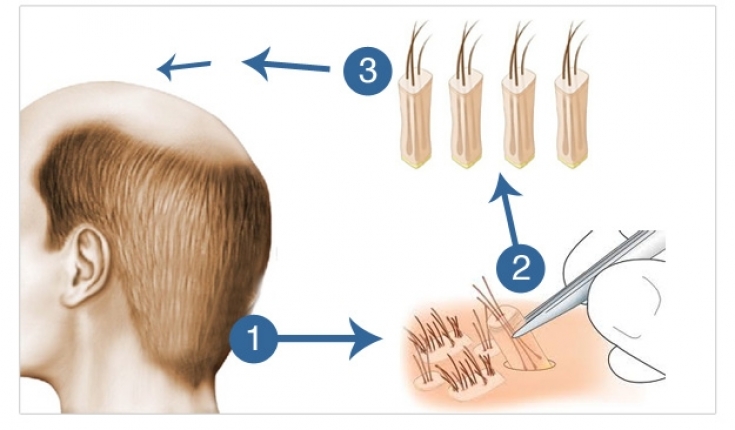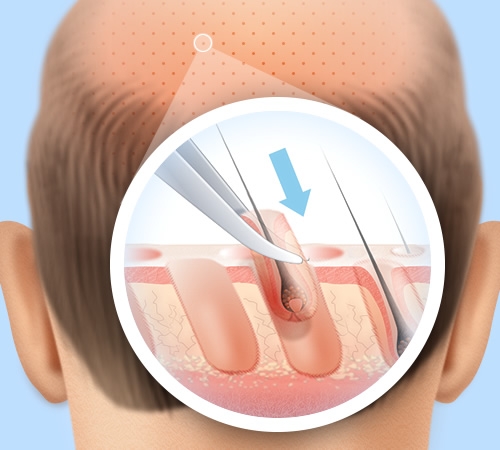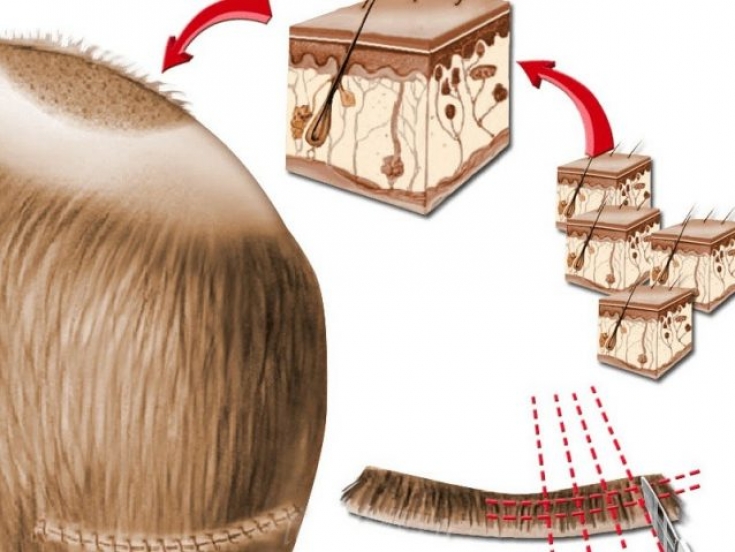Most often, patients with significantly thinned hair and a deeply neglected process of baldness turn to a trichologist. Unfortunately, many of them think that hair loss is an accidental, temporary phenomenon that can be dealt with with shampoos and ointments. And when the situation becomes critical, patients come to the trichologist with a request to restore the former splendor of the hair.
One of the most difficult aspects of the doctor's work is to explain to the patient not only the reasons why he developed baldness, but also the possibilities of modern methods of hair restoration. After all, the process of treating baldness is very long, laborious and not always as effective as the patient would like. In some cases, part of the hair can be restored only with the help of transplantation.
Today, one of our top plastic surgeons will answer a few questions about hair transplant surgery and advice on this challenging procedure for patients with hair loss issues. Kadochnikov Sergey Valerievich, Candidate of Medical Sciences, Leading Plastic Surgeon of the Institute of Plastic Surgery "Virtus"

What are the types of alopecia in men
S.K .: Male pattern baldness - when hair falls out intensively on the frontal and parietal parts of the head - is a very common problem not only among the male population of our planet, but also among many women.
A new protocol for the treatment of alopecia: mesotherapy in combination with botulinum therapy?
The reason for the development of this condition is considered to be the damaging effect of the male hormone dihydrotestosterone on the hair follicles, due to which they gradually decrease in size and atrophy.
Today, some drugs are recommended for the treatment of androgenetic alopecia, but they can only be effective in cases where the patient has retained his own hair.
In addition, drugs can only stop hair loss, but do not stimulate the appearance of new ones in place of the fallen ones. Therefore, hair autotransplantation is recognized as the only radical method of treating androgenetic alopecia in the world.
Anagenic alopecia: causes and methods of treatment?
The operation of transplantation of hair follicles is indicated in cases of alopecia of androgenetic, post-traumatic nature. In cases where the problem is associated with dyshormonal conditions, skin diseases, it is recommended, first of all, the correction of these conditions or the treatment of diseases that caused alopecia.

What questions do patients usually ask about hair transplantation?
S.K.: Common questions: when will I see the effect after the operation and to what extent can the hairline be restored?
The growth of new hair from the transplanted follicles begins 3-4 months after their transplantation. The area that can be covered with transplanted follicles and the number of transplanted follicles ultimately determines the density of hair growth.
S.K.: Is it possible to combine hair transplantation with therapeutic and cosmetic procedures for the scalp and hair?
It is highly desirable to transplant follicles into prepared skin. That is, agents that improve blood circulation in the recipient site are recommended. Recently, platelet-rich plasma has been most commonly used for this purpose.
Using Doppler ultrasound of the skin, this procedure has been clinically proven effective in improving blood flow, which increases the survival rate of the follicles.
Periodic Hair Loss: A Symptom of Temporary Alopecia?

What is the survival rate of transplanted hair: are repeated operations required?
S.K.: If it is necessary to close large areas of the skin, transplantation of hair follicles is performed in several stages. First, the primary grafting of this area is performed, and secondly, the number of follicles is increased to create hair density.
When using techniques to improve blood supply in the recipient areas, the degree of engraftment can reach 80-85%. Also, the improvement of engraftment helps to reduce traumatization of the follicle during sampling. The technique of taking micrografts shows itself best. In addition, this technique does not leave visible scars.
Is there a need for preliminary psychological preparation of the patient for hair transplantation? What is the rehabilitation period after the operation? Necessary conditions that the patient must comply with?
Alopecia areata: proven treatments?
Psychologically, the patient must be ready for a long operation and waiting for the result within several months. In cases of extreme alopecia, the patient must be explained the limits of the technique and that it is impossible to completely restore the hairline due to the lack of sufficient material for transplantation.
Source estet-portal.com






Add a comment